This guide to buying light bulbs for your home will help you with tips to save money, minimise energy consumption and reduce pollution in the process.
When most of us think of a light bulb we think of the normal domestic light bulb that most of us grew up with. They were the only type of bulb available at the time and were everywhere we looked. They were available in a variety of wattage ranging from 25 to 200 watts.
In those days energy efficiency was not as prominent as it is today. Although I do remember being shouted at for not turning the lights off when I left a room and the fact that electricity was not free. That was the extent of energy saving in those days. In reality, even had we wished to be more energy efficient there were no alternatives available.
At that time, a typical home in the UK would spend 30% of their electricity bill on lighting. That is a massive amount of money just to illuminate the home. It is clear that we have finite resources available and that we must consume less.
Initially the answer was thought to be the compact fluorescent lamp (CFL). When they were first introduced, people were trampled in the rush to get this new-fangled energy saving light bulb. In reality they were a dreadful compromise that people grew to hate. They took an age to get to full brightness, some taking more than three minutes. The light quality was appalling and in severe cases could cause a migraine. Most people stopped using them and reverted back to the old-fashioned tungsten bulb.
In the recent past dedicated LED lights have become a reality, although initially they were of poor quality and had a harsh output. They are the most efficient type of lighting available today and are now a realistic alternative to many traditional lamp bulbs. They are durable, contain no mercury, are easily disposed of and can last for over 50,000 hours. LED bulbs are available in a wide range of colour temperatures with excellent colour rendition and a wide variety of cap types.
LED bulbs can now replace almost every light bulb in your home from picture light strip bulbs to fridge lamps.
This article is designed to make you more aware of the options available to you today rather than a definitive guide to each type. Hopefully you will now be inclined to try one of the alternatives and together we can save energy, reduce pollution and save you some money in the process.
Our range of lighting accessories and LED light bulbs can be viewed by following the links.
So, what choices do I have? Here is a comprehensive list of available bulbs. Although not exhaustive, it does cover almost every lamp that you may have in your home. Please contact our experienced customer care team on 0151 650 2138 if you see a bulb here which you need and we can offer friendly accurate advice on the best one for your needs.
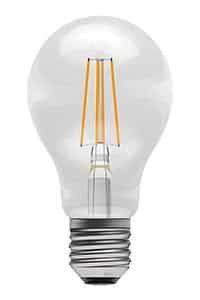
GLS (General Lighting Service bulbs)
- The humble light bulb, used anywhere and everywhere for over 100 years.
- Used in most pendants lights and some wall lights.
- Available in all caps in varying brightness and colour temperatures with clear or opal glass.
- Economical to buy, bright and attractive.
- Available in incandescent, halogen, CFL and LED.
- Dimming and non dimming options available.

Candle Bulb
- Used where space is limited you want to show off the elegant shape of the bulb.
- Used in wall lights and chandeliers.
- Also available with decorative bent tip.
- Available in all caps in varying brightness and colour temperatures with clear or opal glass.
- Economical to buy, bright and attractive.
- Available in incandescent, halogen, CFL and LED.
- Dimming and non dimming options available.

Golf Ball Bulb
- Used where space is limited and there is insufficient room for larger bulbs.
- Used in some wall lights and chandeliers.
- Available in all caps in varying brightness and colour temperatures with clear or opal glass.
- Economical to buy, compact and bright.
- Available in incandescent, halogen, CFL and LED.
- Dimming and non dimming options available.
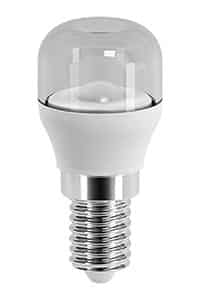
Pygmy Bulbs
- A very small bulb for use in confined spaces.
- Used in small fittings and night lights.
- Available in BC, ES and SES caps in different colour temperatures, usually with clear glass.
- Economical to buy and compact with limited brightness.
- Available in incandescent and LED.

Strip Light Bulbs
- Strip lights are available in 221mm and 284mm lengths.
- Used in picture lights, under cupboard kitchen lights and some bathroom mirror lights.
- Available in different colour temperatures, usually with clear glass.
- Available in incandescent and LED.
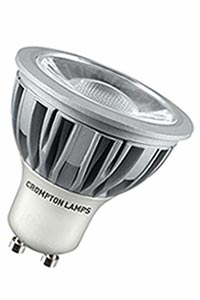
GU10 Spot Light Bulbs
- Very common GU10 spot light bulb.
- Mainly used in recessed down lights, floor up lighters and down lights.
- Available in different colour temperatures in a choice of beam angles.
- Available in halogen and LED.
- LED versions are an easy retrofit and give more options than halogen.
- Dimming and non dimming options available.

Reflector Lamp Bulb
- Mainly used in older down lights before the GU10 was developed.
- Available in ES and SES caps.
- Available in different colour temperatures (LED only).
- Available in incandescent and LED.
- LED versions are an easy retrofit and give more options than incandescent.
- Dimming and non dimming options available.
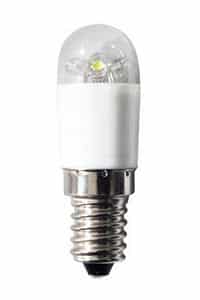
Appliance Lamp Bulb
- Used in household appliances such as fridges, microwaves and ovens.
- Available in SES cap.
- Specialist bulbs for various environments including extreme heat and extreme cold.
- Available in incandescent and LED.
- LED versions are an easy retrofit where available.
- Specialist bulbs that are relatively expensive to purchase.
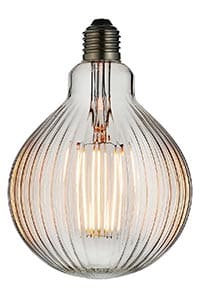
Decorative Lamp Bulbs
- Very popular recent additions that include globe, pear shaped and tubular lamps.
- Designed to be shown off on its own.
- No need for a ceiling light fitting or lamp shade.
- Usually available in ES cap. Some decorative vintage style filament bulbs are also available in BC cap.
- Available in incandescent and LED.
- Dimming and non dimming options available.
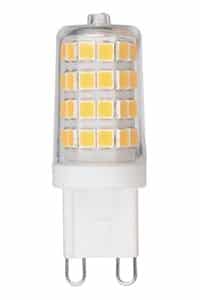
G9 Capsule Bulb
- Very popular small capsule style bulbs used inside lights with small glass shades or globes and give a sparkling light effect.
- Available in different colour temperatures.
- Available in halogen and LED.
- LED versions are an easy retrofit.
- Economical to buy, very compact and bright.
- Dimming and non dimming options available.
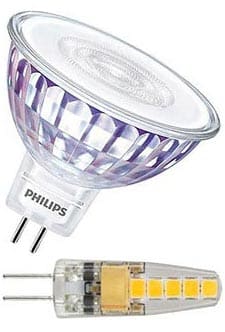
12v Low Voltage MR16 Spot Light and G4 Capsule Bulbs
- Very popular in the 1980’s when the MR16 spot light bulbs were widely used in kitchens and recessed down lights.
- Available in halogen and LED.
- Transformer required for halogen and a driver may be required for LED.
- Popular on boats and caravans where they can be used directly off the 12v battery supply.
- LED versions available in different colour temperatures.
- Economical to buy, very compact and bright.
- Dimming and non dimming options available.
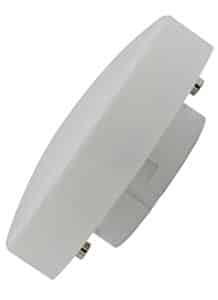
GX53 Lamp Bulb
- An odd looking lamp bulb that hasn’t proved to be that popular.
- Used mainly in under cabinet lighting and other fittings requiring a low profile bulb.
- Available in CFL (Compact Fluorescent Lamp) and LED.
- LED versions are an easy retrofit.
- Inexpensive, low profile and bright.
- Dimming and non dimming options available.

R7s Linear Lamp Bulb
- The R7s lamp, available in 78mm and 118mm lengths. Available in a variety of wattage.
- Used mainly in older outdoor floodlights that are now superseded by LED integrated equivalents.
- Still used in some wall washer lights and bright up lighter floor lamps.
- Available in halogen and LED.
- LED versions are an easy retrofit.
- Expensive, low profile and bright.
- Dimming and non dimming options available.

Compact Fluorescent Lamps
- CFL lamp bulbs are basically fluorescent tubes, bent into all kinds of shapes and sizes.
- Available in a multitude of different caps for domestic and commercial use.
- LED versions are an easy retrofit.
- Commonly used in commercial environments.
- Very difficult and sometimes expensive to dim.
- Expensive to purchase, very long lasting and bright.

T8 Fluorescent Tubes
- Fluorescent tubes have been used for almost 100 years and the T8 has proven to be the most popular.
- Countless millions are currently in use all over the world.
- Energy efficient, very long life and excellent colour rendition.
- Commonly used in older fluorescent kitchen lights and commercial settings.
- Very difficult and expensive to dim.
- Economical to buy and very bright.
- LED replacements are available however, care needs to be taken as often they are not a simple retrofit and may need some rewiring in order for them to work.
Now we know that our bulbs can be changed for LED, we need to know about colour temperatures. LED colours are mostly in shades of white and are measured in degrees on the Kelvin scale. This is called the colour temperature and shown as ‘K’.
The rooms in your home should be bright and happy without feeling sterile, so choosing the right colour temperature can make a difference to the ambience and the mood. Generally, there are four common types, warm white, white, cool white and daylight.
Warm white bulbs are a warm yellow and are rated 2500-3000K. These are the closest to the colour of the old-fashioned incandescent bulbs. Whilst they will light a room well, you get a warm relaxing light. They are best suited to bedrooms where you want the atmosphere to be warm and relaxing.
White bulbs are rated slightly less yellow with a 3000-4000K rating. These will give a pleasant glow in your home without being clinically white. These are recommended for living rooms where you’d like people to feel the spaciousness whilst enjoying a relaxed ambiance.
Cool white bulbs are great for washing a room with fresher, more energising light. Home office work areas and kitchens are ideal spaces for these invigorating bulbs. The 4000-5000K light is closer to a daylight bulb, without giving the harsh intensity.
Daylight bulbs have a blue, refreshing hue. The light does feel a bit clinical, but it could be perfect for your bathroom, kitchen, or home office.
The image below gives you an idea of the different colour temperatures available.
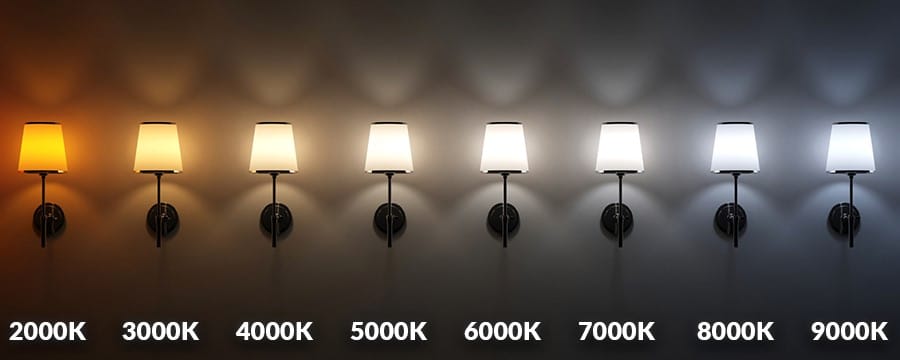
Illuminating Lumens
Many of us remember when every light bulb was chosen by Watts. The wattage was determined by how much power they used. LED bulb packaging often still mention wattage equivalents, but now favour a more precise measurement, the lumen output. What is lumen output?
Lumens are the intensity (brightness) of the light being given off rather than the power being used. This handy table shows what you should be looking for.

Finally, don’t forget that sunshine is free. Well chosen lighting can set off a room delightfully and there’s no better feeling than natural light flooding into your room. If you have a room with big windows, open those blinds, draw the curtains and enjoy the beneficial effects that natural light has on your mind and body. Until dusk arrives, and then you can enjoy the mood that your chosen home lighting enhances.


